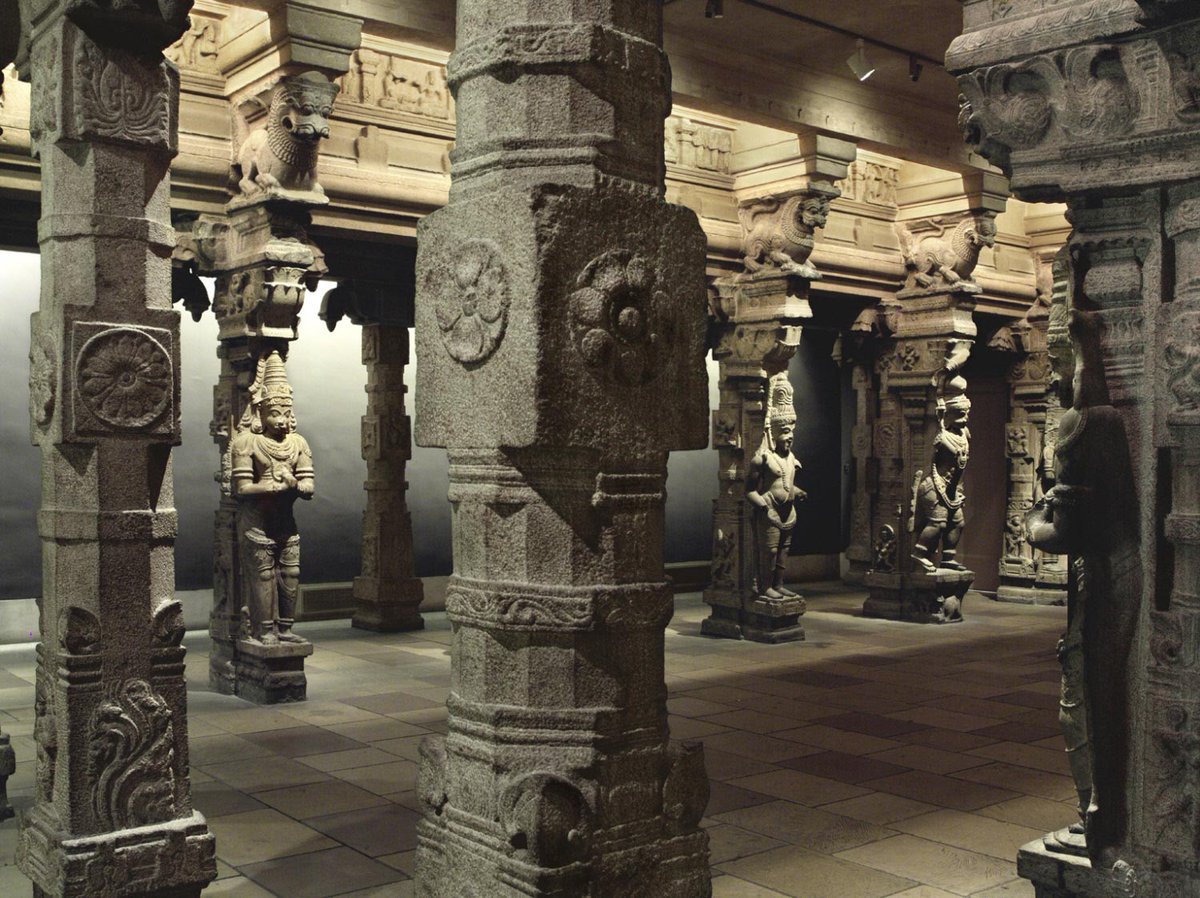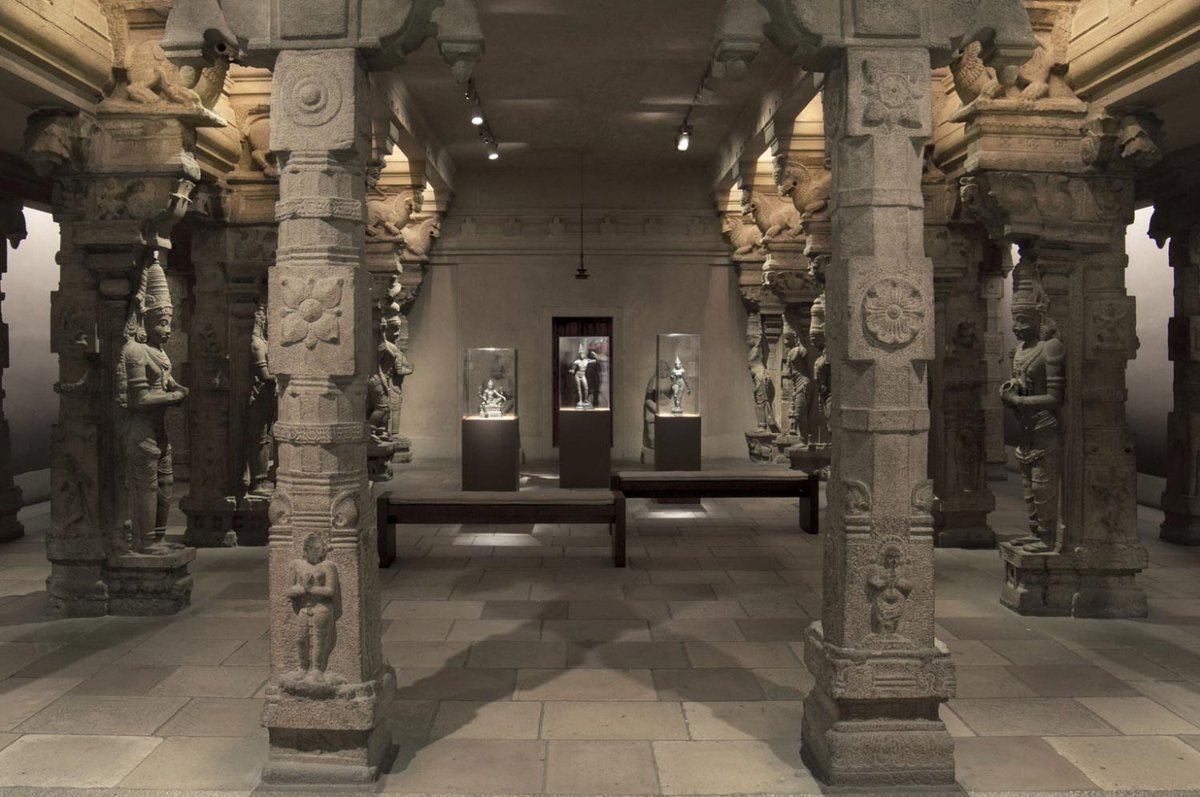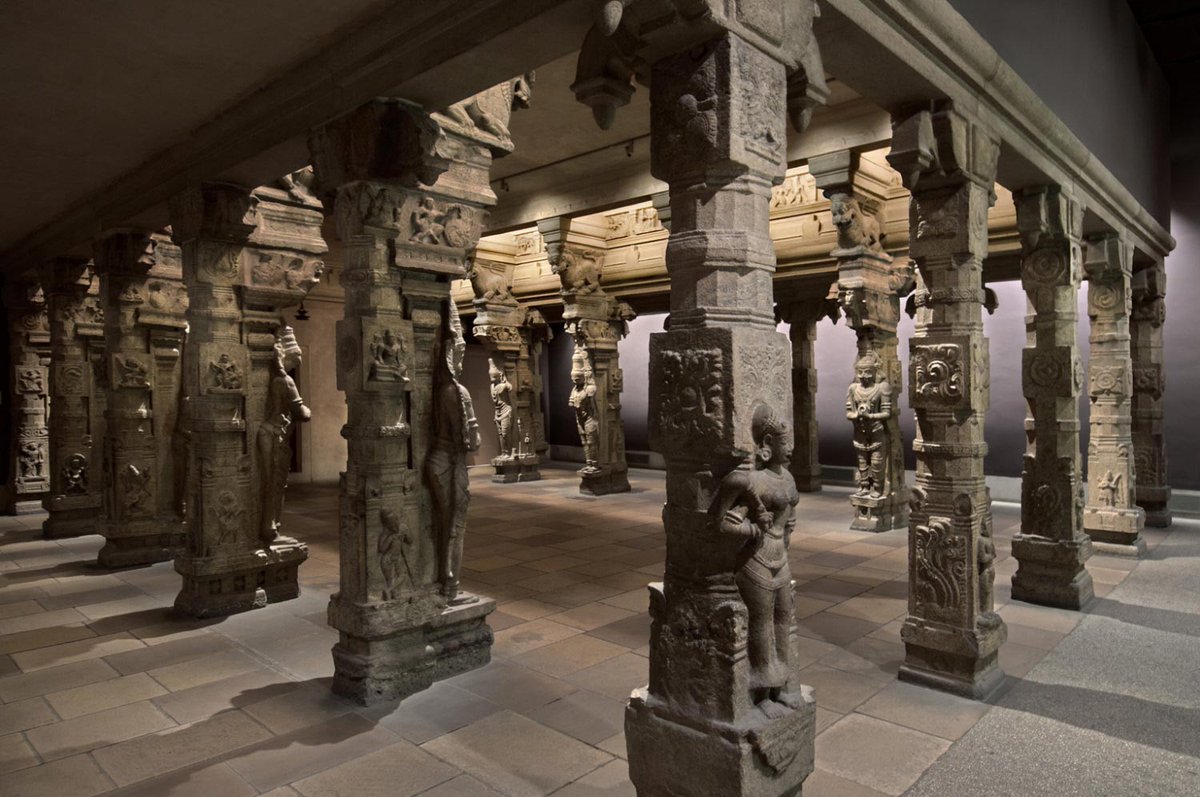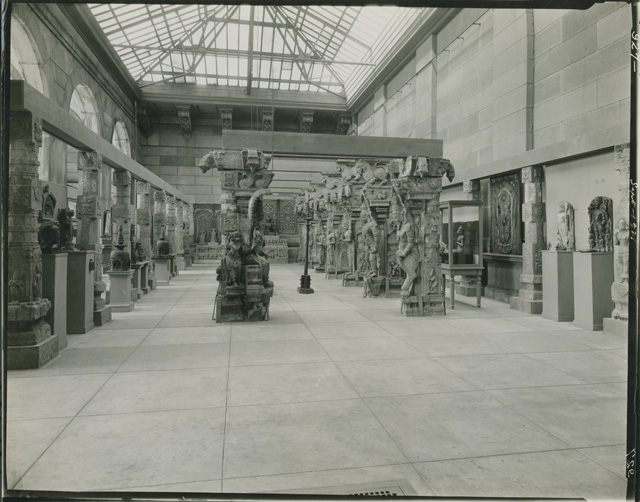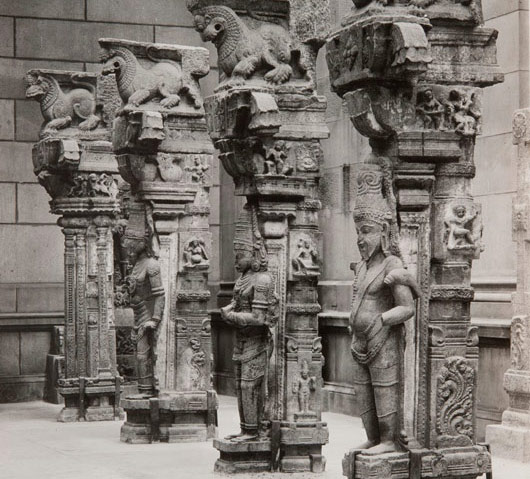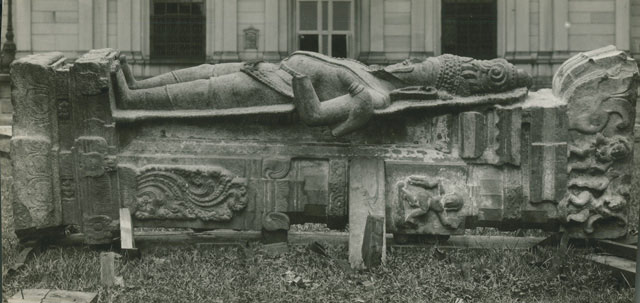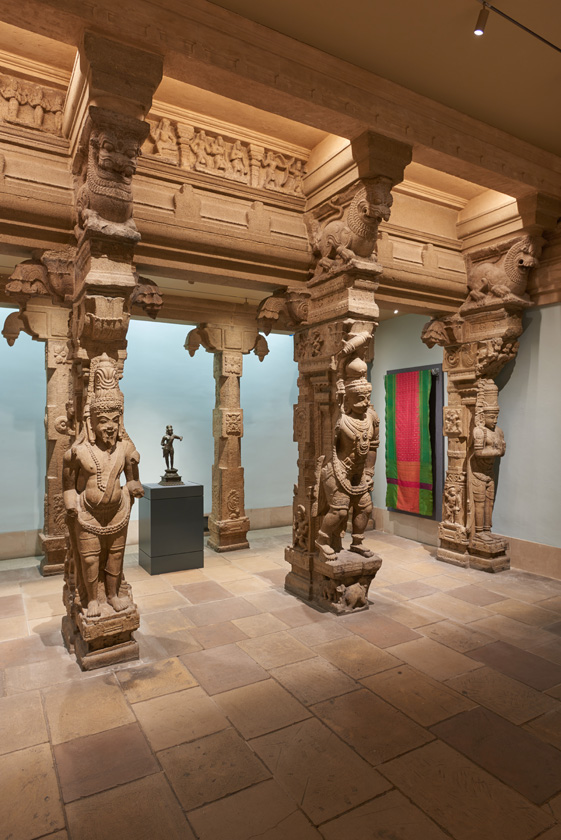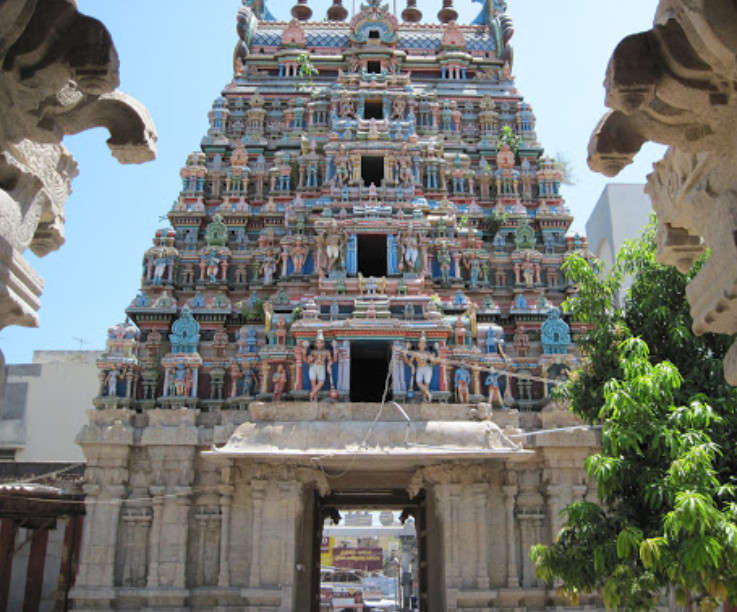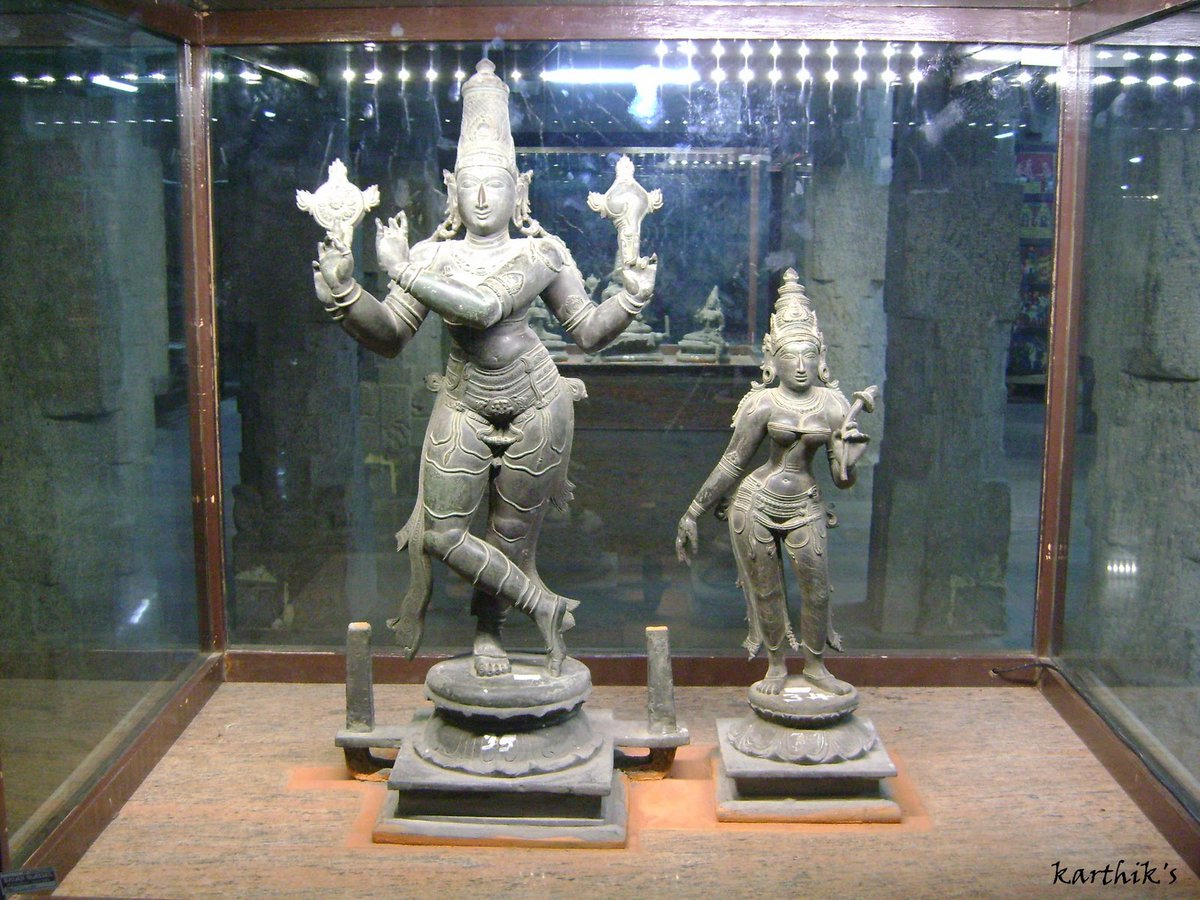Exquisitely carved pillars that once formed the Vasantha Mandapa of Sri Madanagopalaswamy Temple, Madurai, now stand at the Philadelphia Museum of Art, Philadelphia.
In 1912, when the temple was being renovated by the British, these pillars were sold in an auction by temple authorities to Adeline Gibson, a Philadelphia resident who was on her honeymoon at Madurai. She transported them to the US, and on her death, were donated to PMA in 1919.
According to records, most of the pillars, carved during the 1560s, were once part of a hall dedicated to the Goddess Lakshmi in the Koodal Alagar Perumal and Sri Madanagopalaswamy Temples.
This hall is made of over 60 pillars, each carved from a separate block of granite. A few fragments remain within the temple compound in India, but most are at the @philamuseum. The pieces are from the temple’s celebration hall that was dismantled in ~1840 by the British.
Today it is illegal to export artworks over 100 years old from India without government permission, but no such rules existed in 1912. According to letters in the Museum’s archive, Gibson negotiated with a temple trustee to purchase the fragments and then legally exported them.
more images
link to the exhibit https://philamuseum.org/calendar/exhibition/collection-highlight-temple-hall
link to the exhibit https://philamuseum.org/calendar/exhibition/collection-highlight-temple-hall
The form of the main deity Sri Madanagopalaswamy is a combination of Lord Krishna and Vishnu. He stands holding a flute in two hands and a conch and a chakra in the other two.
It is believed that Lord Krishna gave darshan to Andal of Srivilliputhur in this form at the temple.
It is believed that Lord Krishna gave darshan to Andal of Srivilliputhur in this form at the temple.

 Read on Twitter
Read on Twitter